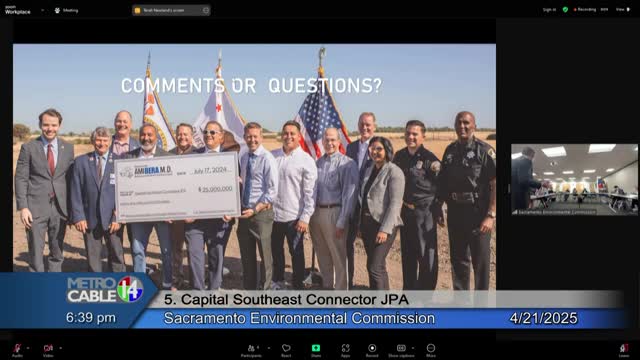Sacramento County Sustainability Manager John Lundgren announces retirement and hiring plans
April 23, 2025 | Sacramento County, California
Thanks to Scribe from Workplace AI and Family Portal , all articles about California are free for you to enjoy throughout 2025!

This article was created by AI using a video recording of the meeting. It summarizes the key points discussed, but for full details and context, please refer to the video of the full meeting. Link to Full Meeting
One of the primary topics was the county's Habitat Conservation Plan, which aims to balance land use with environmental protection. Officials emphasized that the plan is closely aligned with the county's general plan, ensuring that access and conservation areas are clearly mapped out. This integration is crucial for preventing habitat destruction and urban sprawl, as the county continues to face increasing housing demands.
The commission also discussed the funding mechanisms for permanent open space mitigation. By utilizing sales tax revenue, the county is able to purchase conservation easements, thereby securing land for future generations. This approach not only protects local ecosystems but also supports small-scale agricultural practices, such as grazing, which can coexist with conservation efforts.
Sustainability Manager John Lundgren provided an update on the county's sustainability initiatives, coinciding with the upcoming Earth Day celebrations. He announced that the county would participate in the Environmental Council of Sacramento's Earth Day event, showcasing various departments and their contributions to sustainability. Lundgren also mentioned the anticipated launch of an updated sustainability dashboard, which will detail the county's progress on climate action initiatives.
However, the meeting also addressed concerns regarding Assembly Bill 306, which could significantly impact the county's ability to implement REACH codes—regulations that exceed state building standards aimed at reducing greenhouse gas emissions. If passed, this legislation would prohibit the adoption of new REACH codes for six years, potentially hindering the county's climate action strategy. Lundgren expressed the need for the county to adapt its approach to sustainability if this bill is enacted, emphasizing the importance of integrating housing development with environmental considerations.
As Lundgren prepares for his retirement in June, he reassured the commission that a succession plan is in place to ensure continuity in the sustainability office. The county is actively seeking a replacement, with an early application cutoff set for May 8.
Overall, the meeting underscored the delicate balance between development and environmental stewardship in Sacramento County. As the region navigates housing pressures and legislative challenges, the commission's commitment to sustainability and conservation remains a critical focus for the community's future.
Converted from Environmental Commission - 4/21/2025 meeting on April 23, 2025
Link to Full Meeting
Comments
View full meeting
This article is based on a recent meeting—watch the full video and explore the complete transcript for deeper insights into the discussion.
View full meeting